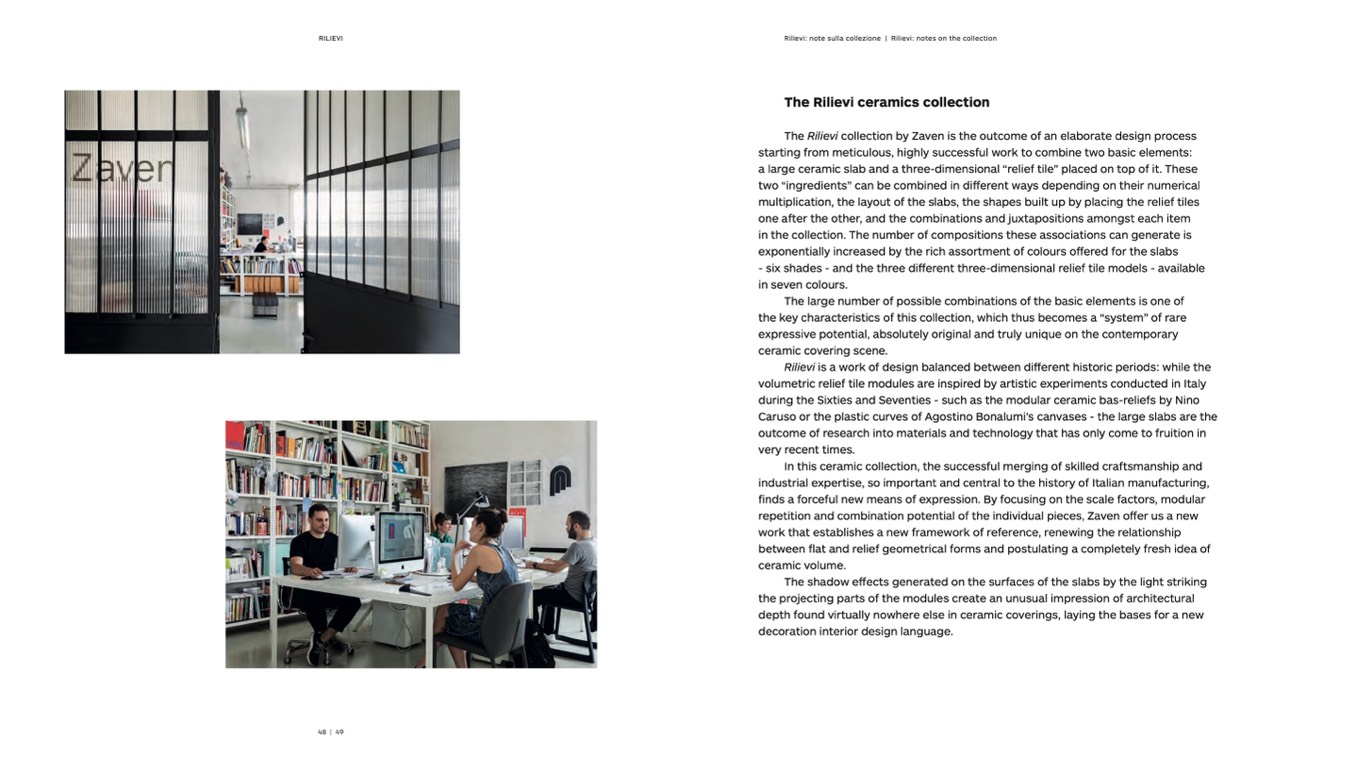
RILIEVI
Rilievi: note sulla collezione | Rilievi: notes on the collection
The Rilievi ceramics collection
The Rilievi collection by Zaven is the outcome of an elaborate design process
starting from meticulous, highly successful work to combine two basic elements:
a large ceramic slab and a three-dimensional “relief tile” placed on top of it. These
two “ingredients” can be combined in different ways depending on their numerical
multiplication, the layout of the slabs, the shapes built up by placing the relief tiles
one after the other, and the combinations and juxtapositions amongst each item
in the collection. The number of compositions these associations can generate is
exponentially increased by the rich assortment of colours offered for the slabs
- six shades - and the three different three-dimensional relief tile models - available
in seven colours.
The large number of possible combinations of the basic elements is one of
the key characteristics of this collection, which thus becomes a “system” of rare
expressive potential, absolutely original and truly unique on the contemporary
ceramic covering scene.
Rilievi is a work of design balanced between different historic periods: while the
volumetric relief tile modules are inspired by artistic experiments conducted in Italy
during the Sixties and Seventies - such as the modular ceramic bas-reliefs by Nino
Caruso or the plastic curves of Agostino Bonalumi’s canvases - the large slabs are the
outcome of research into materials and technology that has only come to fruition in
very recent times.
In this ceramic collection, the successful merging of skilled craftsmanship and
industrial expertise, so important and central to the history of Italian manufacturing,
finds a forceful new means of expression. By focusing on the scale factors, modular
repetition and combination potential of the individual pieces, Zaven offer us a new
work that establishes a new framework of reference, renewing the relationship
between flat and relief geometrical forms and postulating a completely fresh idea of
ceramic volume.
The shadow effects generated on the surfaces of the slabs by the light striking
the projecting parts of the modules create an unusual impression of architectural
depth found virtually nowhere else in ceramic coverings, laying the bases for a new
decoration interior design language.
48 | 49

